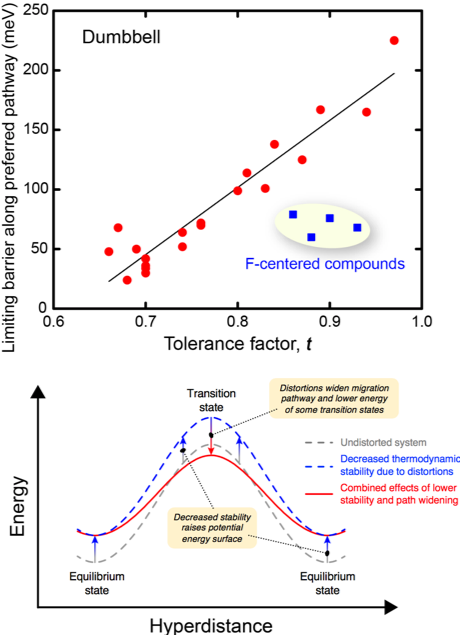
Scientific Achievement
The discovery of solid electrolytes remains an important scientific goal. This search has been slowed, however, by incomplete understanding of the chemical and structural features that give rise to high ionic mobility.
Significance and Impact
Toward revealing these features, this study quantifies the atomic-scale connections between ion mobility, thermodynamic stability, and lattice distortions across a series of anti-perovskite ion conductors. To our knowledge, this is the first study to systematically probe these connections.
Research Details
- In the anti-perovskites, both the degree of lattice distortion (described by the tolerance factor, t) and stability can be tuned via isovalent composition variation.
- Exploiting this tunability, it is shown that larger distortions correlate strongly with lower energy barriers for percolating ion migration. Lattice distortions suppress corrugations of the potential energy surface by widening certain migration channels and by destabilizing equilibrium configurations.
- Increasing distortions coincide with reduced stability, implying a tradeoff between mobility and stability.
- Thus, maximizing ionic mobility requires balancing a mobility-stability tradeoff. Toward this goal, Na3SI is identified as one example of a ‘balanced’ material

